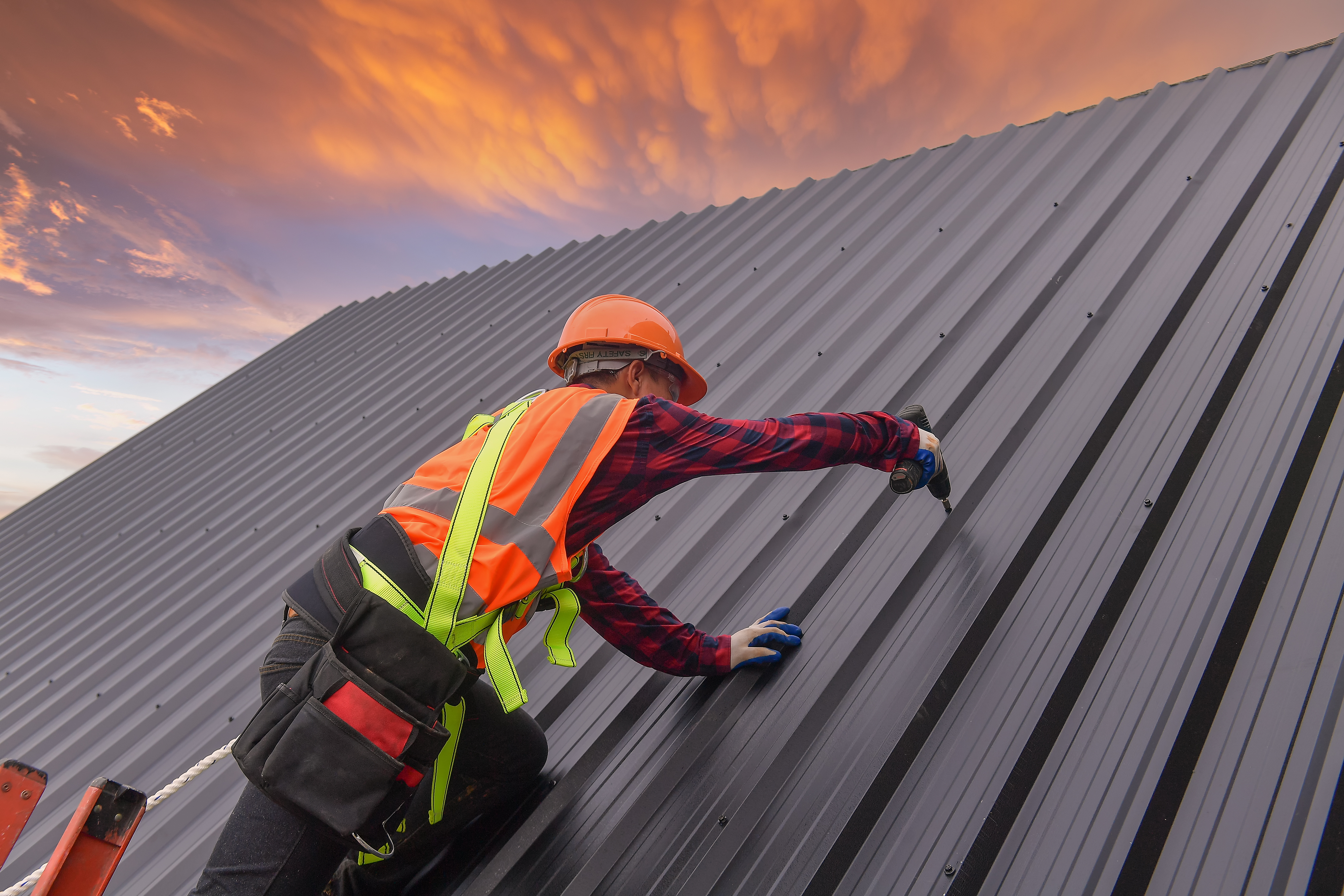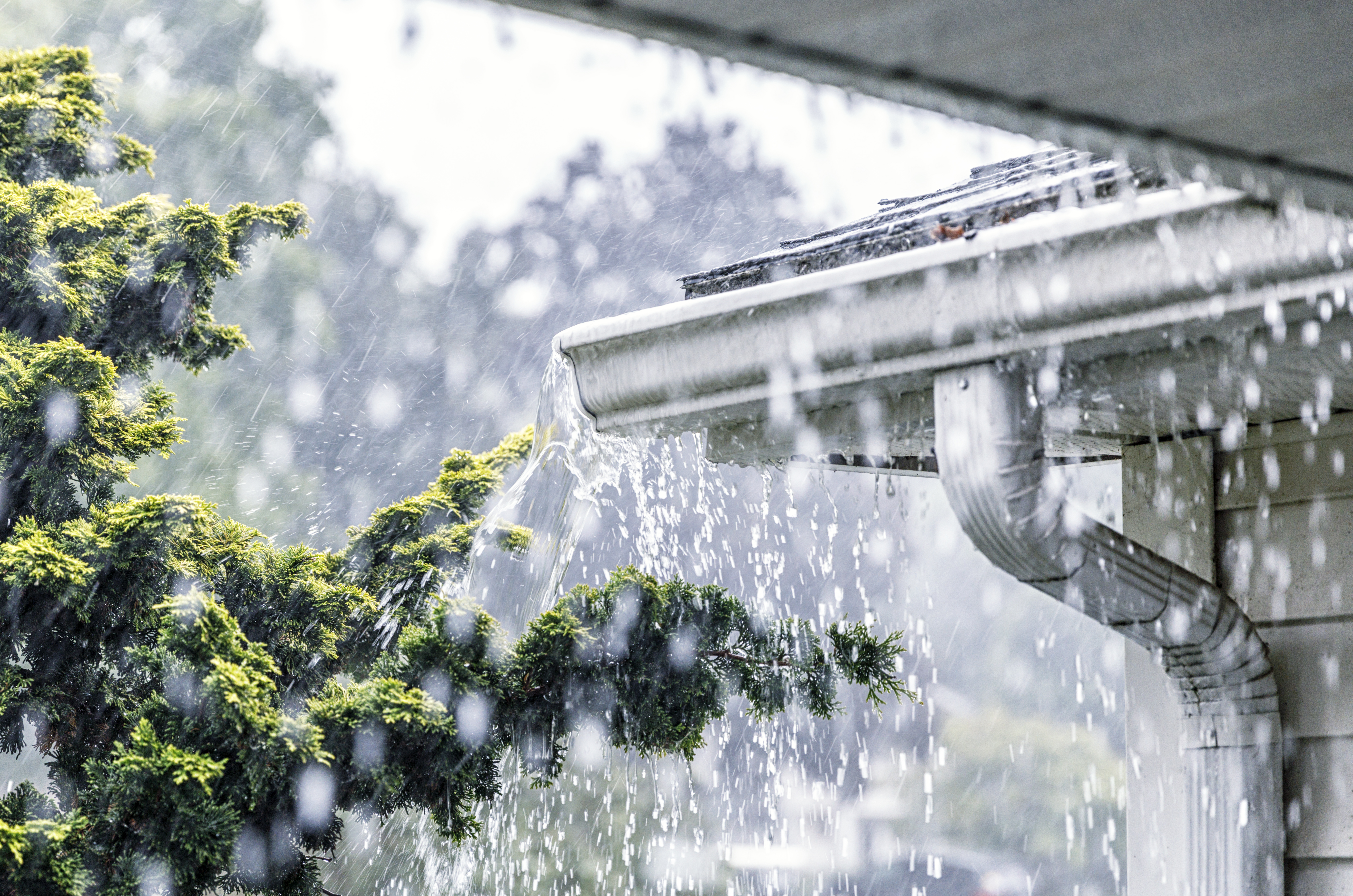The Best Shingles and Roof Designs for a Hurricane

Right now, about five hurricanes pummel the US coastline over an average three-year period. By the end of the century, though, global sea levels are projected to rise another 1–4 feet, which will likely make coastal storms, such as hurricanes, even more widespread and destructive. Hurricanes are a type of tropical cyclone with sustained winds of at least 74 miles per hour—but they can reach velocities of 157+ mph, and trigger floods, storm surges, and tornadoes.
Even a Category 1 hurricane (with 74 mph winds) has the power to pull down gutters, peel off vinyl siding, smash through roof decks, and snap tree branches that might fall onto your house, causing damage all the way down to the foundation. So if you live in an area that’s vulnerable to hurricanes, you might consider investing in an impact-resistant roof that won’t blow off during a particularly violent storm. Read on for our analysis of the best impact-resistant shingles, as well as roof types and shapes, that could keep you safe during the next hurricane season.
Best Roof Materials for Hurricanes
Five of the most widely used wind- and impact-resistant shingles are made of metal, clay, slate, wood, or asphalt. Here are some pros and cons associated with each one:
- Metal: Perhaps the premier choice in this list, a metal roof is relatively easy to install and lightweight, yet it can withstand winds of up to 160 mph, and it boasts a lifespan of decades (40–75 years, depending on which roofing expert you consult). The downsides? The price—expect to pay $275–$400 per square. Some homeowners also don’t love the look, especially since hail storms might leave permanent dimples indented in the metal.
- Clay: Many people consider clay tiles—with their terracotta hue and suggestion of palm-swaying ease—to be the most attractive roofing option out there. Plus, they promote airflow and safeguard against winds reaching up to 130 mph. Unfortunately, winds in a state like Florida often exceed 130 mph, and because clay is so attractive, it’s also pricey, costing $300–$1,000 per square. The tiles are heavy but brittle; some houses may not be able to support them, and a single hailstorm might chip them apart.
- Slate: Hefty, gorgeous, eco-friendly, with a wind resistance of up to 110 mph, slate can make for a quite durable roof—lasting up to 100 years, if well maintained. Now for the cons: Slate is expensive ($900–$1,600 per square), and the tiles are heavy. Some structures might not be able to hold them up, and they can injure people or damage property if they blow away. (Translation: Probably not the best shingles for Florida.)
- Wood: Shingles milled from spruce, pine, and cedar can give your home a cottage-in-the-woods vibe that many homeowners like. They can also withstand winds of up to 110 mph, they hold up fairly well against hail, and they’re moderately priced ($350–$500 per square). Wood shingles do not, however, hold up well against hurricanes more powerful than a Category 3. They require a lot of maintenance. And—as you might imagine—they may not meet Class A fire ratings, so many communities will ban you from installing them.
- Asphalt: Looking for a roof that’s lightweight, offers Class A fire resistance, and is, above all, affordable? Asphalt is for you. Here’s the good news: Asphalt shingles cost about $90 per square. Here’s the bad news: They have a wind resistance of up to 70 mph—and older, recycled shingles might only buffer 50 mph winds. In a climate like Florida’s, they may last around 15 years.
So which roofing shingles are the most wind-resistant? Look at that list once again. The types of shingles are arranged from top to bottom according to their strength. Metal is the sturdiest, serving as a bulwark against winds up to 160 mph. Clay can rebuff winds of 130 mph. Slate and wood have a wind resistance of up to 110 mph. And asphalt can only cushion you against winds of 50–70 mph—amounting to about one-third or one-half the fortitude of metal.
That list also roughly runs top-to-bottom according to how impact-resistant the shingles are. (Hail can inflict some cosmetic damage to a metal roof, but it won’t have to be replaced, while it can pelt an asphalt roof so badly that it’ll need to be repaired.) Clay and slate also might crack in a hailstorm. The exception that jumbles up this list is wood—a wood shake roof stands up surprisingly well to hail.

Best Roof Types and Shapes for a Hurricane
The material on your roof is of vital importance in protecting your home against hurricanes, but so is the design of the roof. Let’s go over some commonplace roof designs to determine which ones offer the most fortresslike defense against the elements.
- Gable Roofs: What’s not to love about a gable? Picturesque, providing plenty of extra ventilation, and easily shedding snow and water, gables are simple to build and don’t cost much. Homeowners in the Sunbelt might not love gables, though, because the frames aren’t always muscular enough to withstand hurricane-force winds. In the worst case scenario, the roof might collapse.
- Hip Roofs: In a hip roof, the sides slope down to the walls, reinforcing its capacity to absorb shocks from wind or snow (not to mention please the homeowners with larger attics and vaulted ceilings). Because they’re more difficult to build than gable roofs, hip roofs tend to be more expensive, and the added seams can make it easier for water to wend its way in.
- Flat Roofs: You can often find the heating or cooling systems of a commercial property installed on a flat roof, because it’s easy to walk around on. (In a residential property, flat roofs are often designed as accents to hipped roofs.) But buyer beware: Water pools on flat roofs, leading to the inevitable headache of water damage.
- Mansard Roofs: A mansard roof is a gambrel-style hip roof ideal for people who want to expand the attic or topmost area of their house—but not ideal for someone who’s looking to renovate on the cheap. The cost of building a mansard roof can sprawl due to its structural complexity.
You’ve Got Options
So what’s the strongest roof-and-shingle combination to keep your property unscathed amid the onslaught of a hurricane? A metal mansard roof is a smart choice—but it’s not your only choice. Let’s say you have a gable roof. You can retrofit it with braces that bolster the entire structure. Or, no matter what type of roof you have, you can fasten it to your walls with steel clips, shore up the sheathing under your shingles, add modified polymer bitumen strips around the joints of the roof deck—the list goes on.
With Ygrene, eligible homeowners don’t have to worry about the cost of hurricane-proofing their roof. Read more about energy-efficient roofs that could be covered with PACE financing—and reach out today with any questions.




